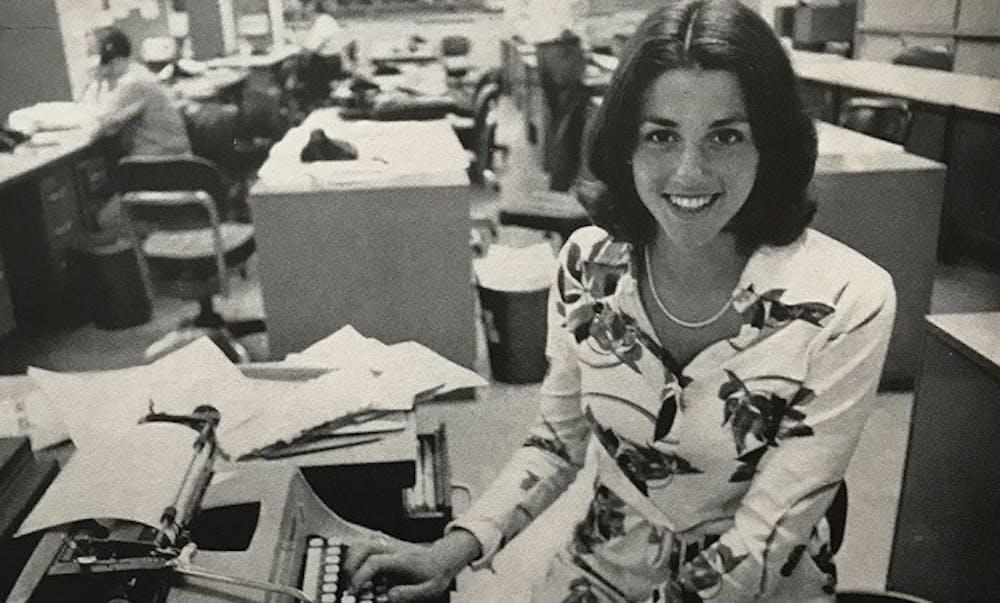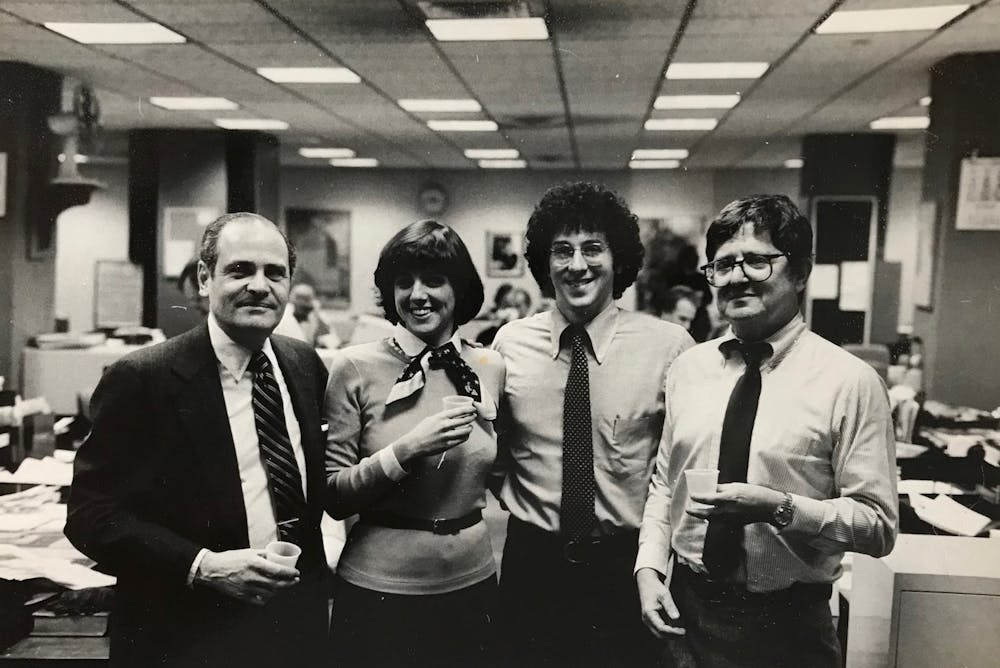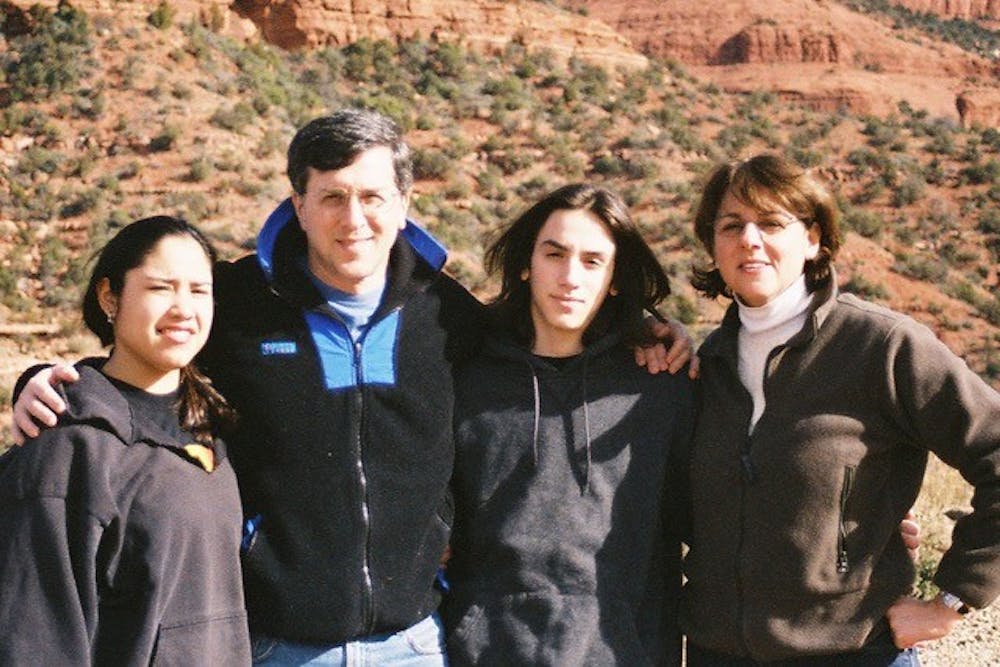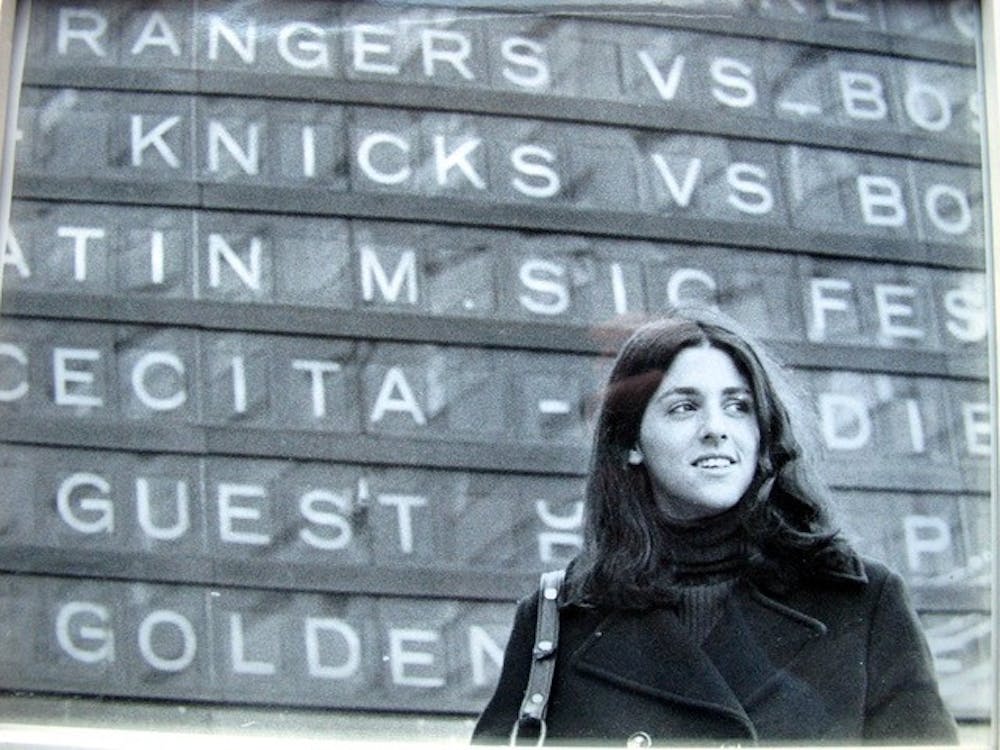Pioneering journalist Robin C. Herman ’73, who worked to dismantle gender barriers in sports journalism at The Daily Princetonian, The New York Times, and other publications, died on Tuesday, Feb. 1. She was 70.
Herman died at her home in Waltham, Mass. after a long battle with ovarian cancer, according to her husband Paul Horvitz.
A journalist for most of her career, Herman was the first woman to become a regular reporter for the ‘Prince’ during her time at the paper in 1970, according to her colleagues. She was also the first woman to become a sportswriter for The New York Times. She became well-known as one of the first two female journalists to gain access to the athletes’ locker rooms in the National Hockey League (NHL) in 1975 and continued to have a prolific career in journalism while gaining ground for women in sports writing.
Herman was born in New York City on Nov. 24, 1951. Her father, Sidney, owned a hat factory and taught business law at the New York Institute of Technology. Her mother, Mildred, was a graduate of Brooklyn College and a sculptor.
Herman grew up in Port Washington on Long Island and attended Paul D. Schreiber High School, where she wrote and edited for the Schreiber Times and sang in the varsity choir, in addition to numerous other activities, according to Herman’s records in the Princeton University Archives.
Even though she listed her prospective program of study as biology and wrote that she sought to become a biologist on her application to the University, Herman’s affinity for journalism was apparent even before she arrived on campus.
“My greatest interest is the Schreiber Times, our newspaper,” she wrote in her personal statement. “Because I have such a great responsibility to keep the students of the school informed of events, I feel the power I have whenever I decide to delete or cut a particular article, write an editorial or lay out the front page.”
Among the first class of women to enter Princeton as undergraduate students, Herman arrived at the University in the fall of 1969 amid tumultuous times. The 1969–1970 academic year was marked by the tremendous changes brought to campus by the shift to co-education and the campus-wide boycott of classes in opposition to the Vietnam War.

While at the University, Herman joined the ‘Prince’ and became the paper’s first regular female staffer. At the time, all new staffers were given an assignment on news and sports by convention, but Herman was only assigned to news writing at the beginning.
“It struck me as inequitable,” Herman recalled in a 2013 interview with Princeton Alumni Weekly. “It was a reflex, really.”
Eventually, Herman pursued sports writing in addition to her news coverage, reporting on rugby, men’s squash, men’s tennis, and football. Her news reporting often featured the early days of Princeton’s first class of undergraduate women as they assimilated into a campus surrounded by thousands of male students.
A story written by Herman for a special issue in 1970 described the challenges of dating amid a 20:1 gender ratio and women picking up habits from their male peers.

Herman worked as an Assistant News Editor and an Associate News Editor for the ‘Prince’ until she was named Sports Editor in the middle of her junior year. She served in that capacity for much of 1972 until she became a Managing Editor, the second highest position on the editorial masthead, due to a shakeup in the board.
Annalyn Swan ’73 and Diana Savit ’73, who were the second and third women to join the ‘Prince’ and who became Editor-in-Chief and Senior Editor, respectively, recalled Herman’s character and drive.
“She was extremely bright, determined, and really spunky,” Swan said in an interview with the ‘Prince.’ “If she didn’t get to where she wanted to go, she was going to die trying.”
Swan recalled that Herman successfully organized a picnic within the English department over the objections of the department chair.
“She had excellent instincts and had a really good feel for sizing up a situation and making it work,” Savit said in an interview with the ‘Prince.’ “I think she knew, in a way that a lot of us didn’t, that [asking for a sports beat] was going to open doors for her even if she had to push them open herself.”
Savit also recalled that even though she, unlike Herman, did not actively seek out a sports assignment as a new staffer, she was required to cover sports in addition to news because of Herman’s precedent.
A member of Tower Club, Herman graduated magna cum laude with an A.B. in English from Princeton in 1973 and was elected to Phi Beta Kappa honor society.
Her 99-page-long senior thesis, which she dedicated “to my friend, Annalyn Swan,” is titled “Three Godey's Lady's Book Authors and a Convention.” The thesis examined the literary works of three prominent 19th-century American women — Eliza Leslie, Catharine Maria Sedgwick, and Harriet Beecher Stowe.
Herman joined The New York Times just six days after she graduated from Princeton. She began her tenure as “copy girl” but quickly became the first full-fledged female sportswriter at the Times.

Herman in The New York Times newsroom.
Photo Courtesy of Paul Horvitz
She briefly covered tennis, yachting, and horse racing before she was assigned to cover the New York Islanders of the NHL in 1974. It was there that Herman was regularly denied entry to the athletes’ locker rooms.
At the time, professional sports leagues generally did not allow female reporters to enter the locker rooms of male players. Herman spoke to players who agreed to interviews outside in the hallway, making it more difficult for her to record the immediate post-game thoughts and perspectives of players.
Herman’s moment of fame came in January of 1975, when the 28th NHL All-Star game took place at the Montreal Forum in Montreal, Canada. Herman and local radio reporter Marcelle St. Cyr were allowed into the locker rooms by the coaches, but in attempting to write a story about the game and the athletes, the two women themselves became the subject of a headline.
Herman moved to cover the New York Rangers at Madison Square Garden in 1976; the locker rooms there were open to female reporters that year with the support of head coach and general manager John Ferguson as well as Rangers players themselves.
Lawrie Mifflin, who worked with Herman while covering the Rangers for The Daily News, recollected how the two female reporters had each others’ backs.
“In the entire country, there were perhaps 10 to 12 women who were covering professional sports, and here were two of us, assigned to the same team,” Mifflin explained in an interview with the ‘Prince.’ “It was so fortunate because we had each other for support; we had each other for strategizing about how to persuade more teams to let us do our jobs properly. It was very unusual; [usually] all the women were on their own.”
A photo of Herman interviewing a hockey player in the locker room for the Times can be found on the eastern wall of Café Vivian in Frist Campus Center.
Herman moved to the metropolitan desk in 1979 and left the Times in 1983. She wrote about health and science as a freelance journalist for The Washington Post and The International Herald Tribune, and authored a book in 1990 titled “Fusion: The Search for Endless Energy.”
Herman became a reporter for the health section of the Post in 1991 before returning to freelance writing in 1995. She joined the Harvard School of Public Health (now the Harvard T. H. Chan School of Public Health) as assistant dean for communications in 1999 and retired in 2012.
Herman met her husband and fellow journalist Paul Fisher Horvitz in 1979 while the latter was editing a national news story she had written. They privately wrote each other messages through the Times computer system using the aliases “Boris” and “Natasha.”
The two were engaged in 1980 and married in 1981.

Herman and her husband Paul Horvitz shortly after their engagement, with New York Times publisher Arthur Ochs Sulzberger Sr. (left) and Times executive editor A. M. Rosenthal (right).
Courtesy of Paul Horvitz
In the June 10, 1999 issue of The International Herald Tribune, they each had a story published on the front page. Herman reported on the chemical pollutant dioxin while Horvitz wrote about the Kosovo War peace negotiations.
The couple adopted their daughter, Eva, from Paraguay in 1987, and their son Zachary was born in Paris in 1990.

Robin Herman with her husband and their children in Arizona in 2014. From left to right: Their daughter Eva, her husband Paul Horvitz, and their son Zachary.
Photo Courtesy of Paul Horvitz
In an interview with the ‘Prince,’ Horvitz spoke of Herman’s devotion as a supportive mother to her children.
“Robin wanted to be a mother and knew she needed to fulfill that role,” Horvitz said. “Both of our children had learning disabilities and subsequently developed mental illnesses. Robin was determined not to give up; she was a truly devoted mother under extremely difficult circumstances.”
In a Princeton Alumni Weekly article she wrote in 2015, Herman reflected on her experiences as a mother in supporting her children through mental illnesses. In 2014, she organized a panel during Princeton Reunions titled “Parenting Young Adult Children With Mental Illness.”
Herman is survived by her husband, Paul Horvitz; their children, Eva and Zachary; two grandsons; and her sister, Summer Pramer.
Allan Shen is a senior writer who often covers research and obituaries. He can be reached at fuluns@princeton.edu, or on Twitter at @fulunallanshen. He previously served as an Associate News Editor.
Correction: A previous version of this piece stated that Diana Savit served as Editor-in-Chief of the ‘Prince.’ In fact, Annalyn Swan served in this role, while Savit served as Senior Editor. The ‘Prince’ regrets this error.








